Is IDPA Like NASCAR? (Part II)
November 21st, 2020
9 minute read
Editor’s Note: In Part I of this two-part series, the author did a brief overview of the similarities and differences between IDPA and USPSA, the gear requirements, and the basic differences at the stage level.
In Part II of this two-part series, we are going to look at how stage layouts and procedures vary between IDPA and USPSA, and provide a more-detailed analysis of the same stage in each of the sports and the different potential approaches.
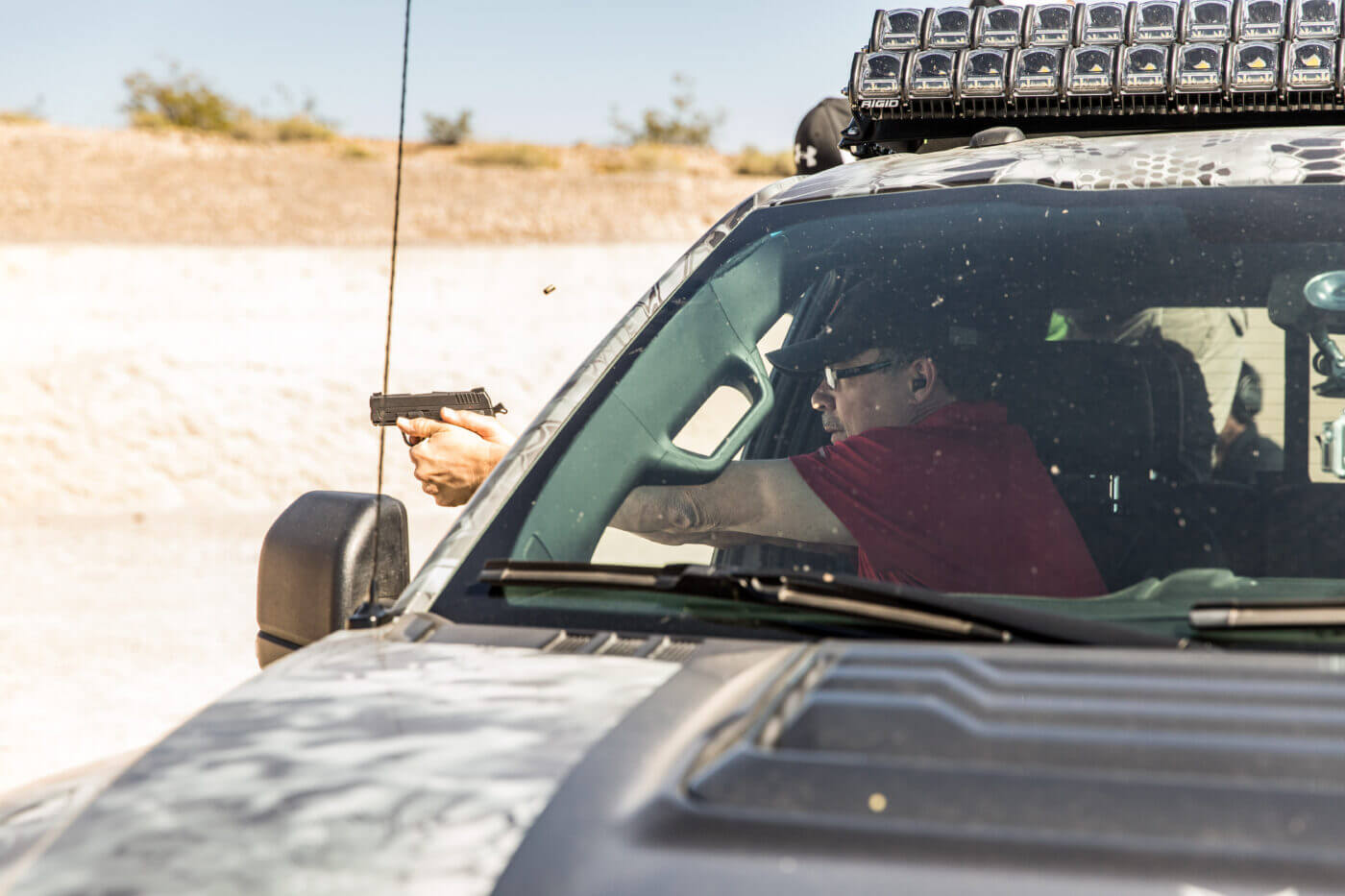
So, if you haven’t shot a USPSA or IDPA competition, maybe the following scenarios can help you decide which sport is a better fit. But just like apple versus cherry pie, it’s really going to come down to personal preference. But why not take a bite of both?
Freestyle
USPSA is based on “Freestyle” competition and is fairly flexible on the requirements of stage design and how the shooter is allowed to attack each course of fire. The round counts vary per stage, generally anywhere from six required hits up to no more than 32 required hits.
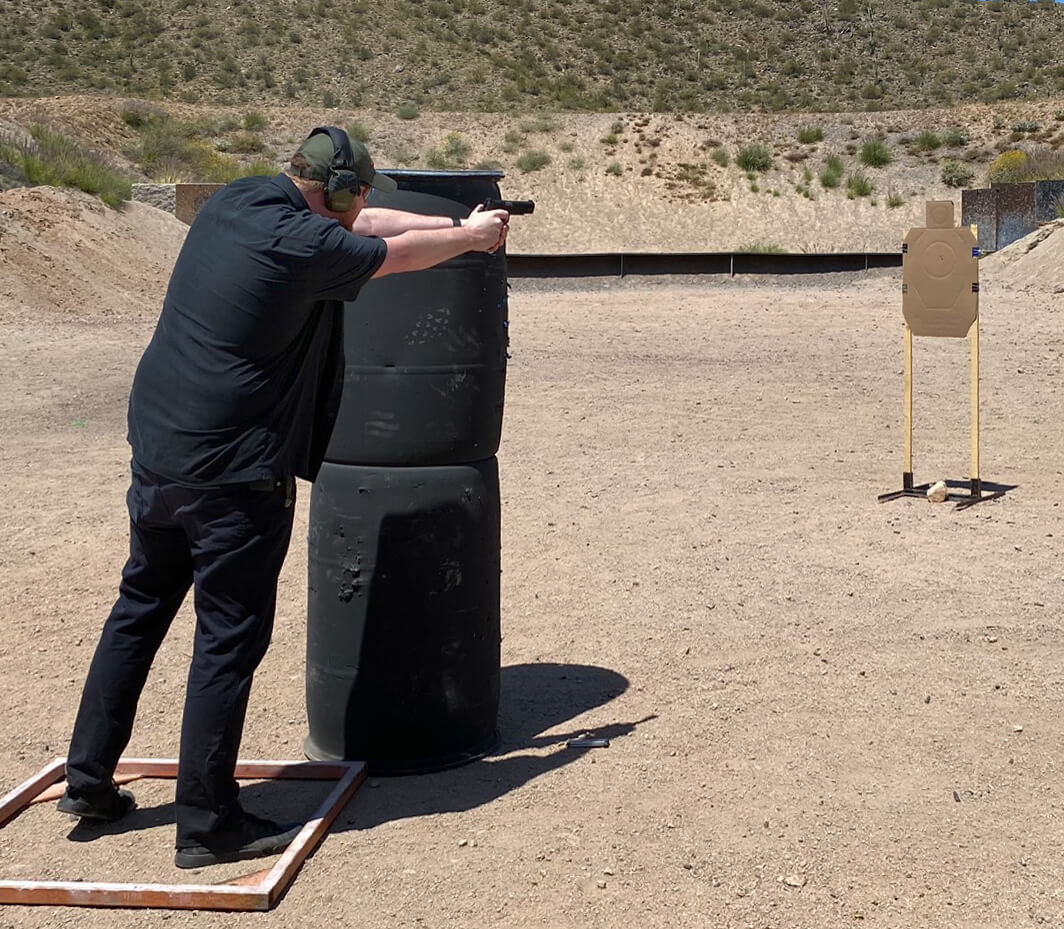
Most courses are “Comstock” (shoot as many rounds as needed) and “Freestyle”, which means the decisions on which targets to shoot first and where to go next are up to the shooter’s discretion — within the limitations of the course. As the shooter, you can usually move where you choose, shoot the targets in any order you want, and reload whenever you need to.
Occasionally, there may be a course (a standard exercise) with a specific procedure to follow, like a mandatory reload after a certain target is engaged, or a course that requires a fixed number of rounds to be fired. The majority of stages (speed shoots, medium and long course of fire) though, leave it up to the shooter to solve the problem.
Tactical Priority
IDPA is based on self-defense and focuses on executing a more “tactical” engagement order, and if there is a cover position, it must be used. In this approach, a specific order must be followed. However, shooters are still able to find small strategic advantages to get an edge on the competition. The required shots for a stage are capped at 18 (versus 32 in USPSA), so the stages tend to be smaller/shorter on average — but this really depends on the individual match director.
At an IDPA match, there are universal rules that must always be followed — rules that define target engagement order (tactical priority) and when and how you can reload your gun. These rules apply to all stages regardless of the layout. Tactical priority (TP) is determined based on where the targets are. If targets are “hidden” behind a barricade of some type, TP is determined as targets become “visible” to the shooter as he moves around the obstacle (slicing the pie). If targets are visibly in the open, the TP rules change, and these targets are always shot near to far.
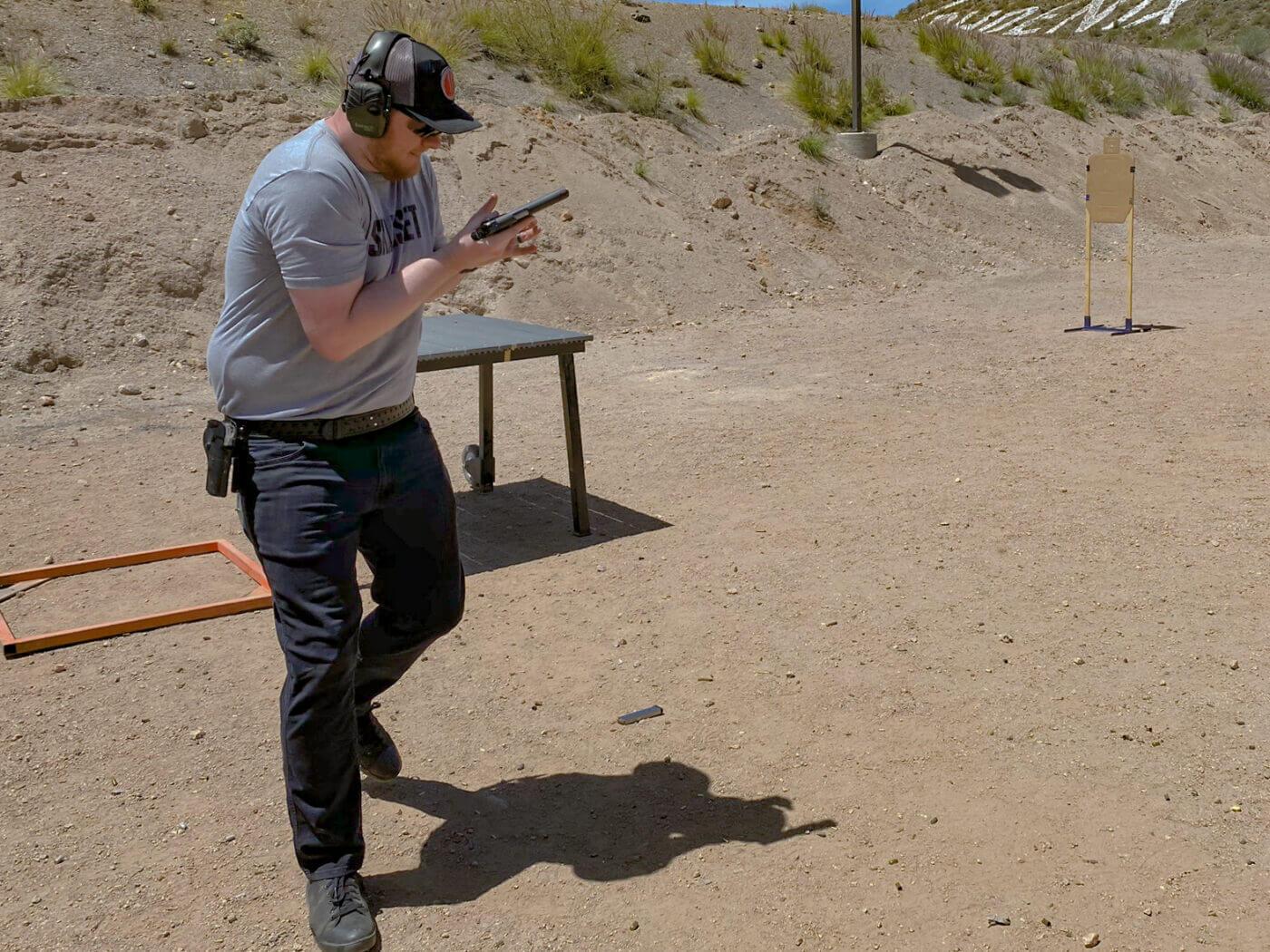
IDPA also requires certain conditions to be met before you can drop and reload magazines, forbidding you to dump any mag on the deck that still has rounds in it. Instead, you have to either retain the magazine on the reload (tactical reload or reload with retention), or reload only when the gun runs dry to a slide lock (emergency reload). So, like the previous “racetrack” analogy from Part I, you have a track to follow and only at certain areas and times can you hit the pitstop to reload. You know, that whole “IDPA is like NASCAR” theme?
In the Real World
Just below is shown an example of a stage that could be used for both USPSA and IDPA. There are seven targets spread around the stage, with a starting position (green box marked “A”), two physical obstructions (the two blue walls — the left wall and right wall; imagine they extend up into space), and a shooting area in which you can move (the gray floor area).
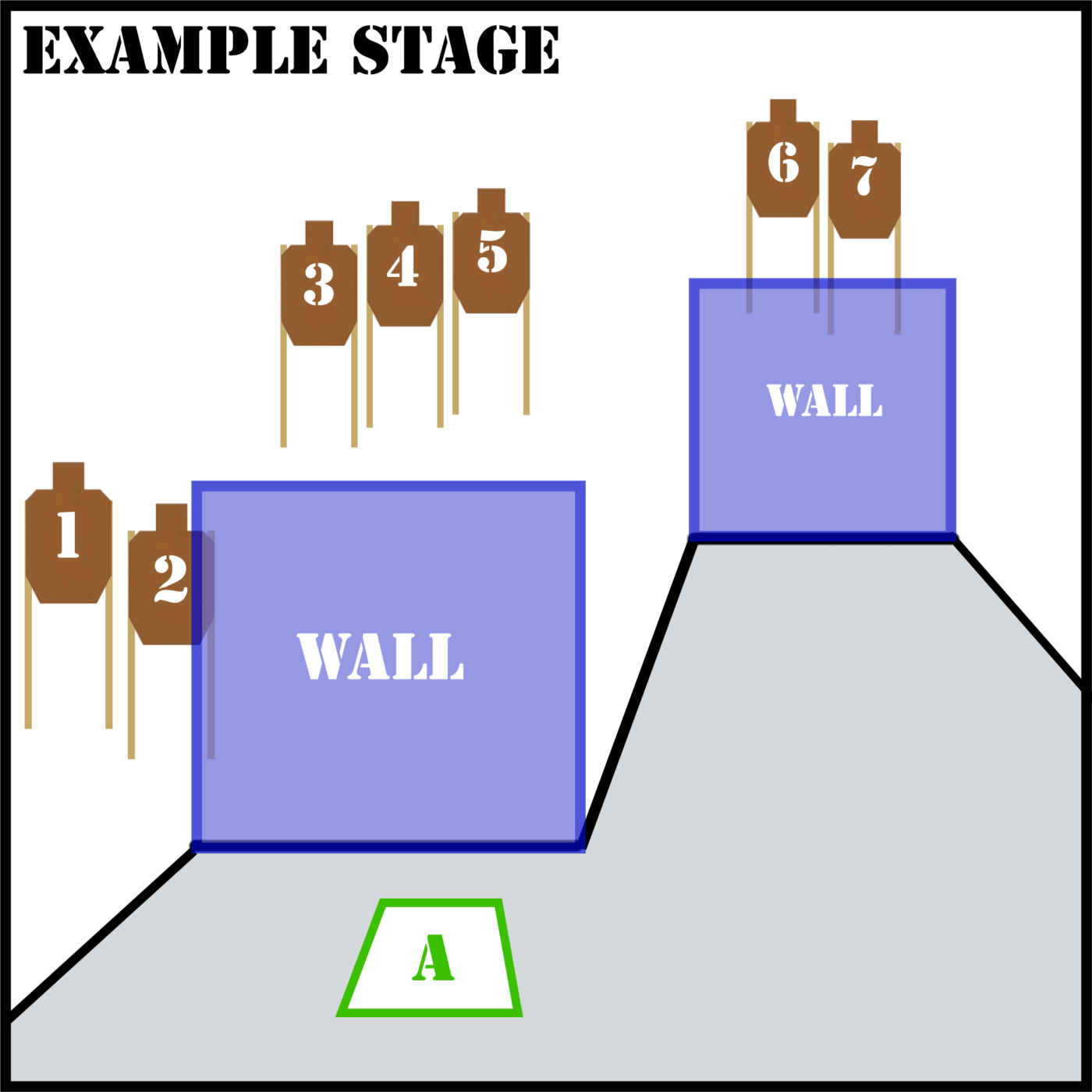
The procedure of this stage is to engage all seven targets with two hits each while being timed. 14 rounds minimum. For the sake of simplicity, we are not going to cover the scoring of the targets, and just assume we hit all the targets as intended dead center, with no misses. How hard is that, right? The shooter’s gear is a single stack 1911 in 9mm with 10-round magazines, that is loaded to capacity (11 rounds). The course of fire instruction is: Start in Box A, engage Targets 1 through 7 with two rounds each (in tactical priority for IDPA).
USPSA Strategies
As a USPSA stage, there is a lot of freedom in this course for fire and there are several strategies to discuss.
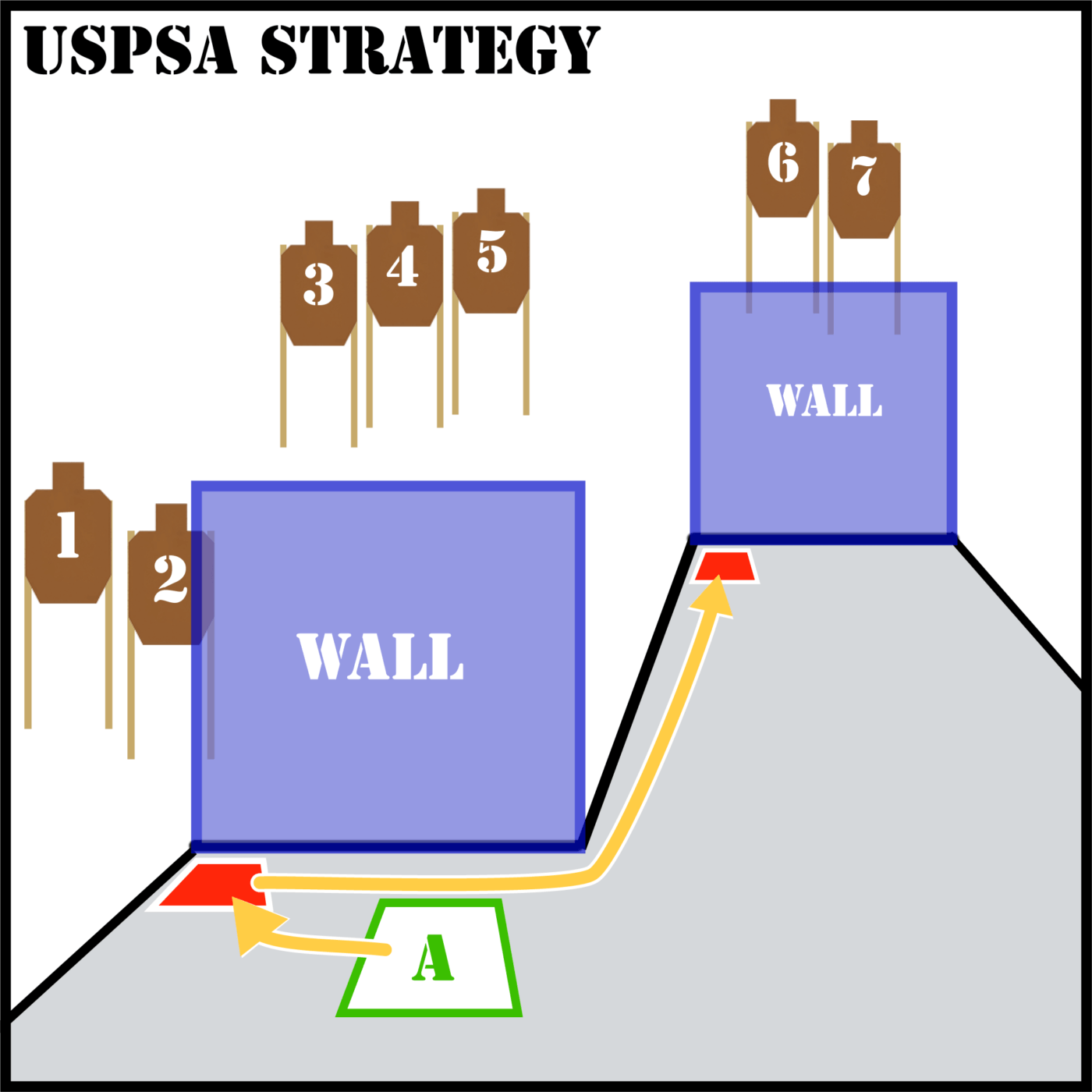
Strategy 1: Move to the left side of the left wall while drawing, engage T1 first and T2 upon seeing more of the target, then move completely around the right side of the same wall to engage T3, T4 and T5 in any order. Next, reload and move to the right far wall and engage T6 and T7 in any order, from either side. This is a pretty safe strategy and very similar to the IDPA plan below. If things don’t go well and you run out of ammo at the second position, you have a lot of space to perform that unplanned reload (and move forward) to complete the course of fire without too much of a time penalty.
However, you probably want to try to save more time by skipping the middle position.
Strategy 2: Move to the left side of the left wall while drawing, engage T1 and then T2. Next, make one long movement from the left wall to the right wall, reloading on the way. With a fully loaded pistol and a closer firing position, engage T3 through T7 (in that order, left to right) from the left side of the right wall.
This strategy has several advantages; one fewer shooting position, a lot of room to reload, saves time by reloading while moving, and advances to a closer firing position for the last five targets, all which should result in better and faster hits! The only potential downfall is that if things go badly at the last position, you only have one extra round in the magazine. You definitely don’t want to run out of ammo here, as it’s extremely slow to do a standing reload.
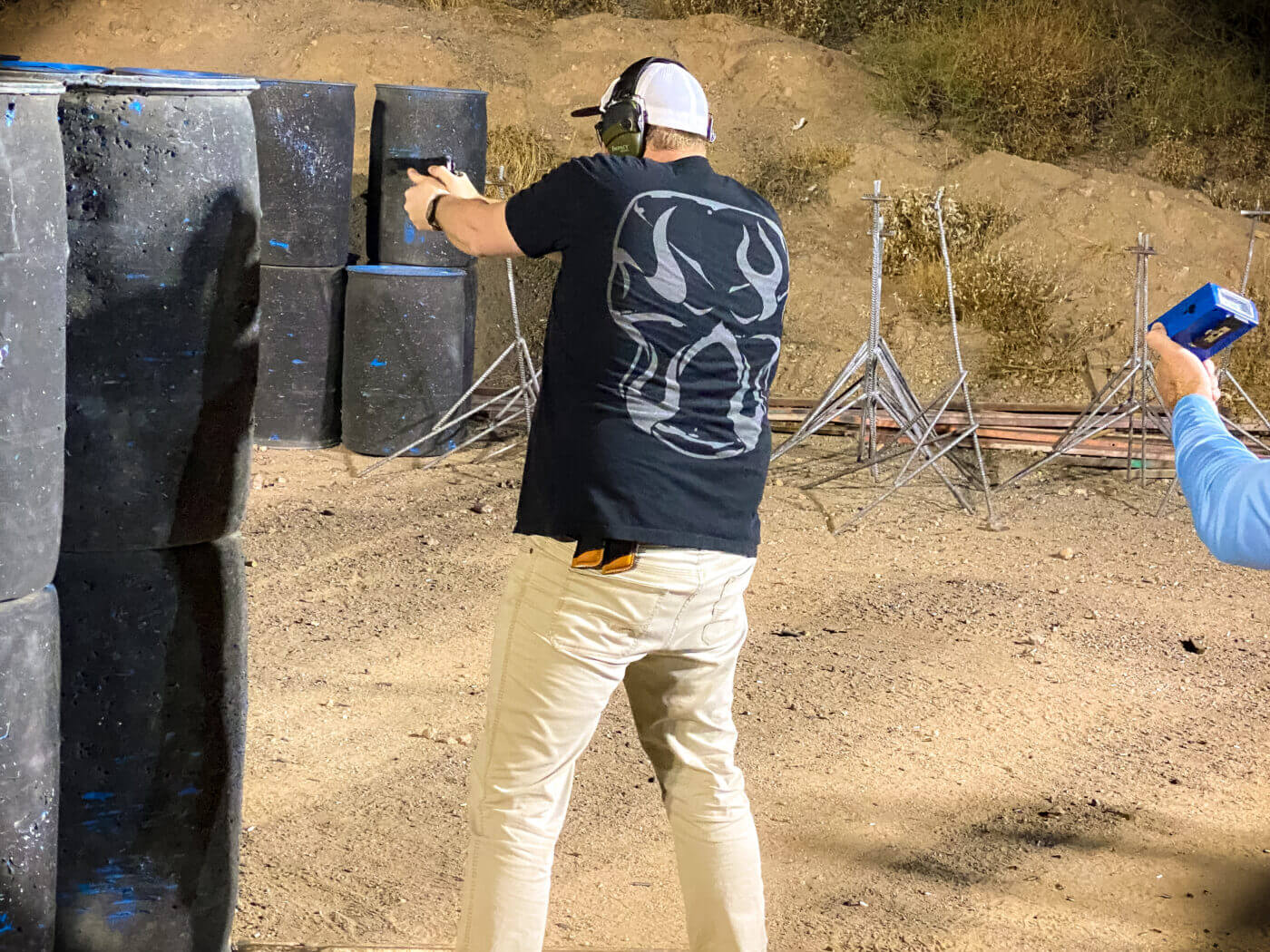
Strategy 3: Move just enough forward and toward the left side of the left wall (while drawing) to engage partially obstructed T2 first, then begin moving away, to the right, as you engage T1. Continue moving around the right corner of the left wall. Shoot T5, T4 and T3 while moving, as soon as you see them. Next, reload — while still moving — and run up to the left side of the right wall and engage the last two targets.
This strategy is very fluent and fast, but has more risk; shooting the partially obstructed T2 first while moving, shooting T1 while backing away from T1, and shooting T3, T4 and T5 while moving forward.
For most, shooting while moving is not as stable as shooting while standing still, and can require extra shots. If you plan to shoot the first five targets essentially while moving, you may have to fire an extra round or two. This could result in running the gun dry and requiring a slide-lock reload at an unexpected point. You could plan to load after T1 if you fired extra shots; otherwise, just reload as originally planned.
So, what kind of strategist are you? High risk? Low risk? Well, that’s the beauty of USPSA freestyle — you get to decide the risk/reward for every single stage.
IDPA Strategies
Let’s shoot this as an IDPA stage now.
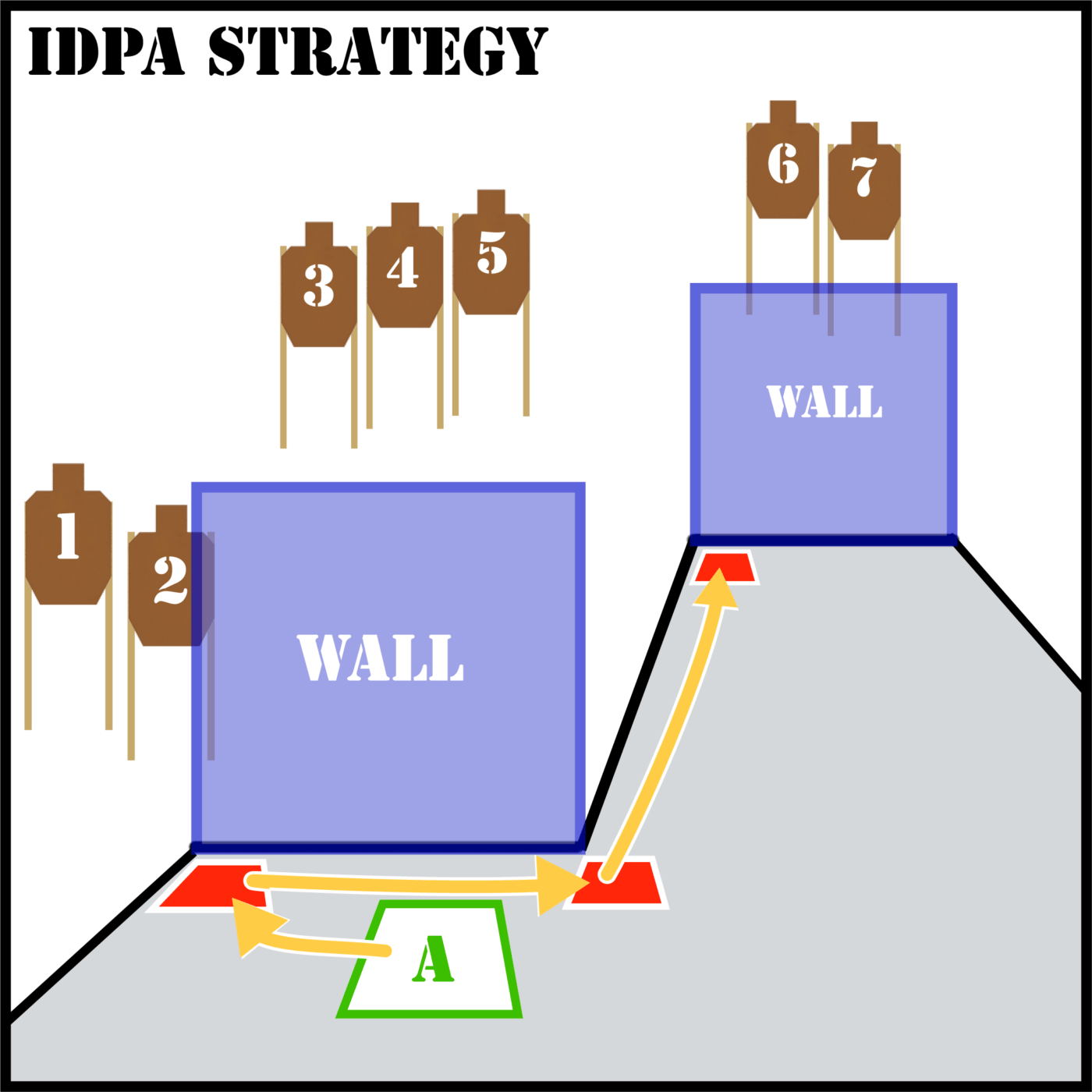
As an IDPA stage, you have less freedom due to Tactical Priority and cover rules. From the start position, since you can see T1 and T2, IDPA requires you engage these targets from near to far. Since T2 is the closest of the two, you must engage it first and then engage T1. No choice, or you get a penalty. The other target arrays must be shot “slicing the pie” or as they appear as you lean around the walls. You must also shoot from and reload from behind cover, so moving forward while shooting targets T3, T4 and T5 is not allowed.
Strategy 1: Move to the left side of the left wall while drawing, engage the targets in Tactical Priority: T2 first and then T1. Move to the right side of the same wall, from behind cover engage the targets in Tactical Priority (you’re going to see T5 first) — T5, then T4 and then T3.
Move forward to the right wall and engage the remaining two targets in Tactical Priority.
Depending on what side of the wall you go to, you will have to engage the targets in the order that you see them as you lean around the wall. If shooting from the left side of wall, engage T6 and then T7. If shooting from the right side of the wall, engage T7 and then T6.
At some point, you have to reload, as you started with 11 rounds in the gun and there are 14 required hits. Your choices are:
1.) An emergency reload (possibly standing) after you shoot your 11th shot, or
2.) a more strategically planned tactical or retention reload as you move, making sure to retain the magazine (rather than just drop it on the ground) since the mag would not yet be empty.
Reload Strategies
Newer IDPA competitors don’t typically attempt the tactical or retention loads — they simply don’t reload until they have shot all their rounds and the slide (hopefully) locked open. In this stage, assuming all has gone well, they would move up to the right wall and from the left side, and they would fire the 11th round as the first shot on T6. They would then return to cover and reload from slide lock, and then shoot T6 one more time before finishing with two shots on T7.
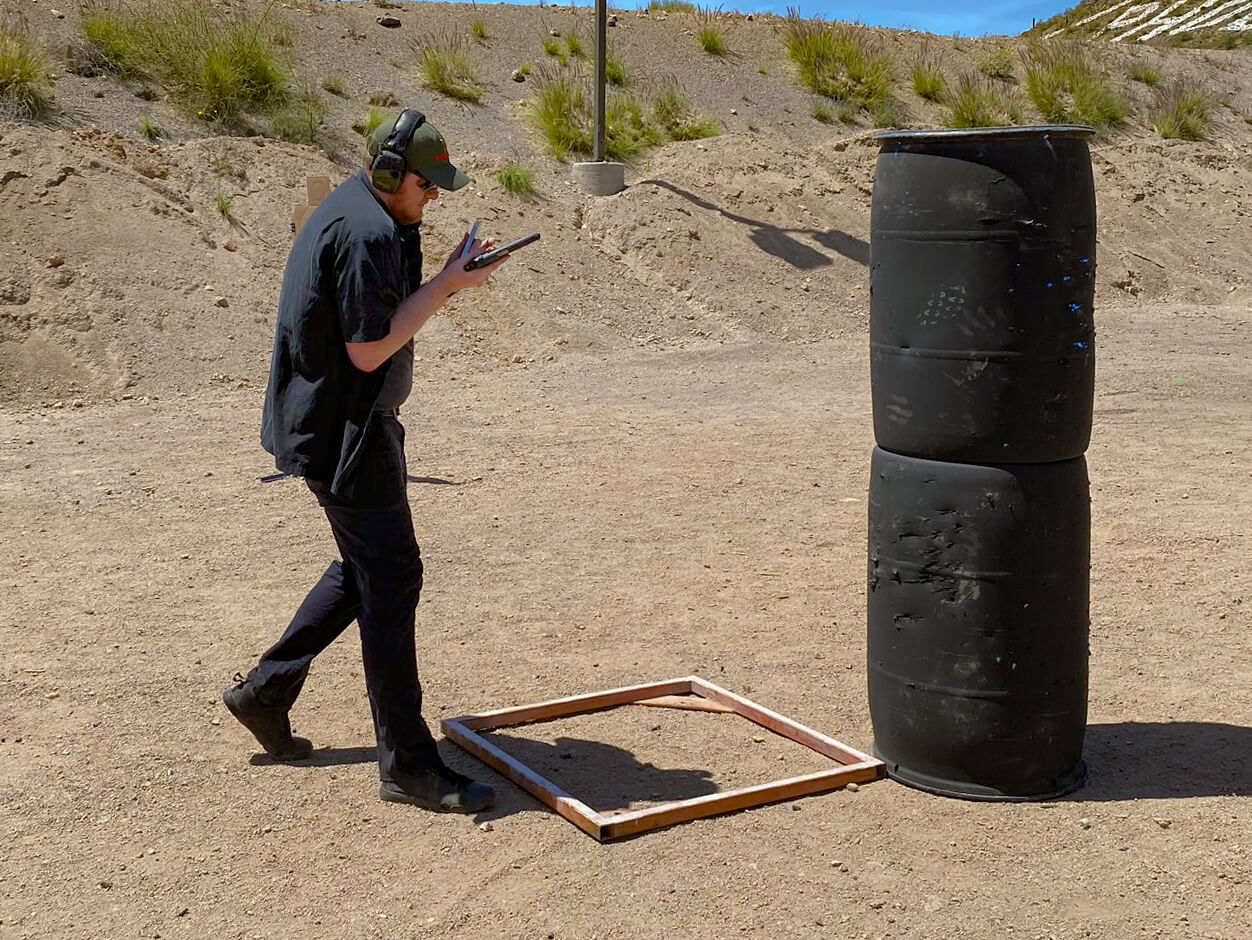
More-experienced IDPA competitors don’t reload until they have shot to slide lock. To make this strategy more efficient though, they will intentionally shoot extra rounds before moving to another position so they can load while moving. In this stage, they would probably fire the 11th round on T3, planning to shoot it three times. Then, while moving forward, they reload from slide lock.
So, the only two options for IDPA shooters on this stage are: 1.) shooting the last two targets from either the right or left side of the wall and 2.) how/where to reload. But, as compared to USPSA, there are many other things to think about — and that is what makes IDPA both challenging and fun.
Game Time
While both of these stages look the same, the way the USPSA shooter approaches the stage is very different from the way the IDPA shooter breaks down the stage. The different rules and slight nuances of IDPA and USPSA give each sport their own vibe. At the end of the day, both sports are just that: an organized game.
Folks can argue back and forth about the “realism” of the course of fire, gear restrictions and so forth, but I think they are missing the point: both USPSA and IDPA are shooting games with their own unique rules. Full-court basketball and half-court basketball use the same ball and hoop, yet are drastically different games because of the court and scoring system. Or, back to the analogy I mentioned in the first part of this series, where IDPA is a car race around a racetrack and USPSA is a race through city streets from point A to point B.
Six of One, Half Dozen …
You may love IDPA and not be so wild about USPSA. You may enjoy both sports equally, even though they’re not directly comparable on a lot of levels. Me, I love to shoot, so I compete in both. I really look forward to the USPSA matches held at our club as they’re known for designing really challenging and fun courses of fire. I also like the wider range of divisions of USPSA, and the “figure out my own course of fire” style.
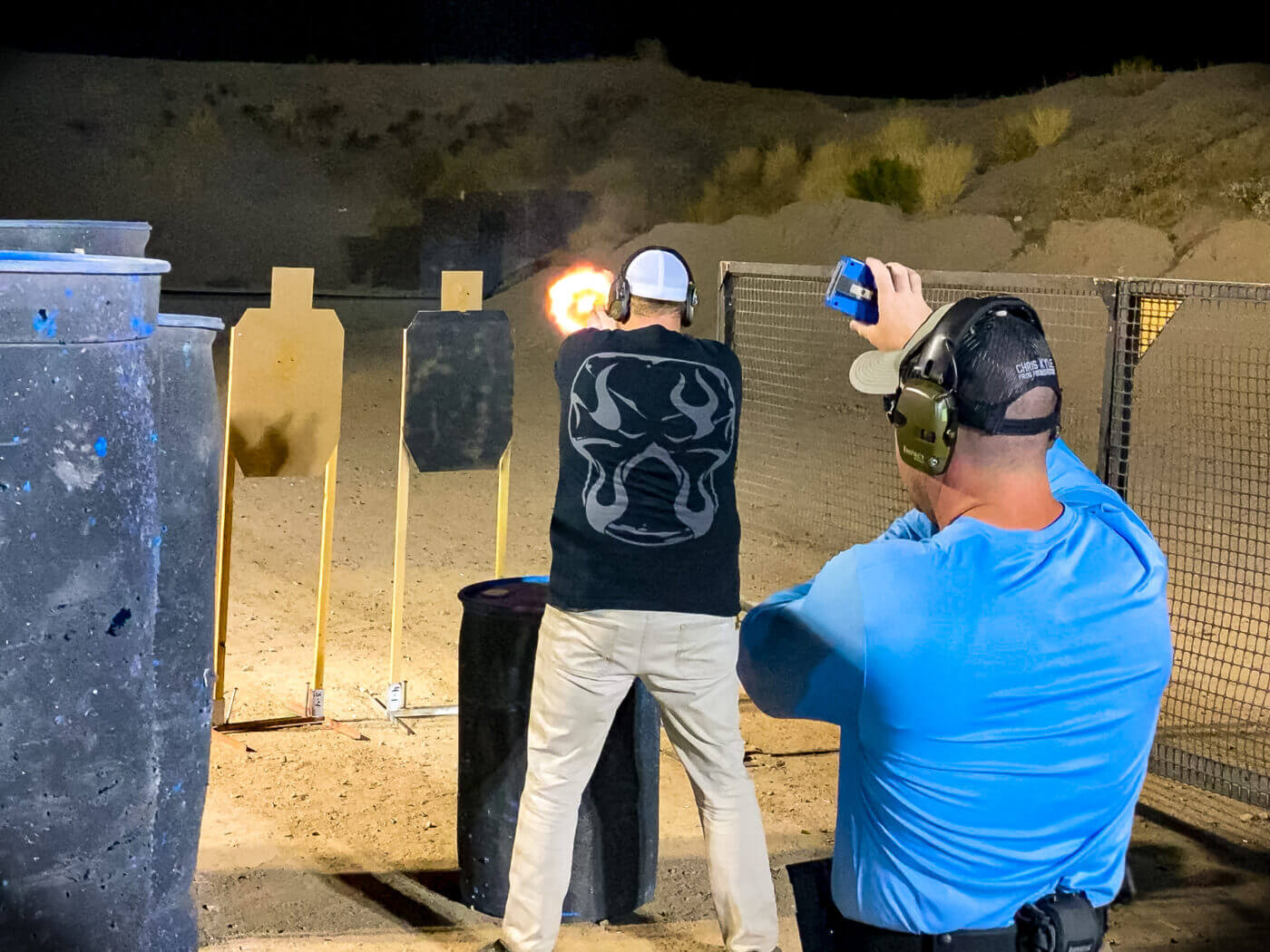
On the other hand, I can also personally appreciate the simpler stage setups of IDPA. They generally steer away from the “run everywhere and shoot a million targets” stage designs that seem to be more prevalent in USPSA these days (and that my feeble brain can’t always figure out).
Since I’ve been a USPSA shooter much longer than and IDPA shooter, the jury is still out regarding IDPA’s more rigid target engagement and reloading rules … although at the last IDPA night match, I only had one penalty and did beat my shooting buddy, so that’s encouraging!
Like most things in life, it always comes down to personal choice, and the only way to know which sport you are going to like better is to get out there and start shooting!
Until next time, stay safe and stay on target!
Editor’s Note: Please be sure to check out The Armory Life Forum, where you can comment about our daily articles, as well as just talk guns and gear. Click the “Go To Forum Thread” link below to jump in and discuss this article and much more!
Join the Discussion
Continue Reading
Did you enjoy this article?

 22
22






